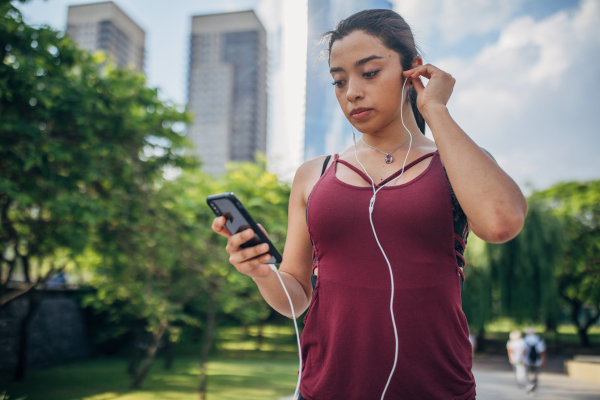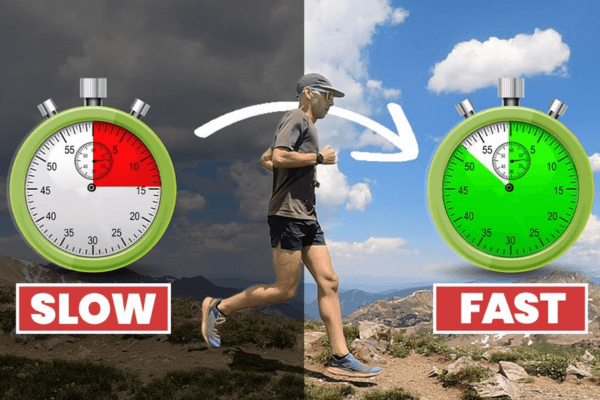First, the easy part.
You lace up your shoes, putting on the gear carefully laid out last night, lucky shorts, lucky socks,
From there it gets harder. The doubts creep in – can you really maintain this pace? Will your legs give out halfway through?
This pre-race feeling of anxiety is something many runners feel. But what if there was a secret weapon you could use to silence those doubts and boost your confidence and athletic performance?
Visualization - Details, not Daydreams
Enter visualization.
A powerful mental tool that can transform your running experience. Visualization isn't about daydreams – it's about actively creating a mental movie of your run, one filled with smooth strides, controlled breathing, and powering across the finish line.
You spend a lot of time training your body - but how much time do you spend training your mind?
You spend a lot of time training your body - stretching, shakes and supplements - but how much time have you spent on your mind?
This blog will get you started on a new area of training.
The Science Behind Visualization
You've probably heard about a lot of studies around how visualization can help athletes. The reason why it helps is simple, when you train your body, your brain develops neural pathways to help with the activity. Over time, with repetition, these pathways become stronger and more efficient. This change happens when you physically work out, but (done in the right way) it also happens when you mentally work out.
Imagining yourself training or competing activates similar brain regions to the ones you use when you're actually performing the physical action.
Imagining yourself training or competing works because it activates similar brain regions to the ones you use when you're actually performing the physical action [1].
In other words, when you mentally rehearse your run, your brain is firing the same neurons that when you're sitting on a chair visualizing that would be firing if you were actually pounding the pavement, biking, swimming or chasing a ball on the field. Who said sitting wasn't exercise!
Research also suggests that "imagery combined with physical practice is more effective than physical practice alone" when it comes to performance and motivation [2] [3]. In other words, by picturing yourself overcoming challenges and achieving your goals, you can boost confidence, reduce anxiety, and build mental resilience – all essential for pushing through tough spots and reaching your full potential.
The Power of Visualization
So, what exactly is visualization? Think of it as mental training for your run. It's about creating a vivid mental picture, or "movie," of yourself conquering the course. This goes beyond simply picturing the scenery. Visualization techniques involve engaging all your senses to create a truly immersive experience, a bit like having virtual reality, but without the need for all the expensive technology.
Here's an example of how you might talk yourself through a visualization session:
Imagine feeling the cool morning air on your skin as you take off, the rhythm of your breath echoing in your ears and see the vapour as you breathe out. You might even hear the satisfying crunch of gravel beneath your feet or the refreshing scent of pine trees lining the trail, and feel your lungs working as you log the miles towards your next PB.
Then repeat it, trying to make it more real each time.
The more senses you use - sight, sound, touch, smell - the more you create a powerful neurological connection between your mind and body. And don't limit yourself to senses, emotions are a powerful tway to motivate, so let your feelings come through as well.
This connection gets your body ready for what it's going to go through on the run, while at the same time boosting your confidence that you can do it and your motivation to get yourself out there and do it.

How to Use Visualization in Your Training
Pre-Run Visualization
In the same way taking a pre-workout supplement primes your body for activity, the pre-run work you do for your mind can also get you ready for training.
Begin by imagining the entire run from start to finish. Ideally you'd do this several times, like in the evening before and the morning of your session - remember repetition is key to build those pathways.
Visualize the course, the terrain, and the pace you want to maintain. Picture yourself effortlessly navigating hills, maintaining a steady rhythm, and feeling strong and energized throughout.
It also helps to think about potential challenges and what you'll do if they happen.
- Maybe you're worried about the infamous hill at mile four. Visualize yourself powering up that incline, feeling strong and determined. Imagine the fatigue building up in your legs, then imagine controlling it and overcoming as you get stronger on the way to the top.
- Maybe you're worried about bad weather - wind or rain. See yourself using the rain on your face as a chance to move faster and pass your competitors through and enjoying the wind at your back to go even faster on the return.
When a problem you've prepared for happens in a race, it's totally different from when it happens as a surprise. When you're prepared, you know exactly how you're going to handle any problem, and it gives you an amazing feeling of confidence that will help you leave those problems behind you (literally!).
How to use visualization during a run
No matter how good your mental skill are when preparing for a run, when you get out there it's a new challenge.
So as you pound the pavement, visualize yourself staying relaxed and composed. Think back to affirmations, like "I am strong", or "I can do this". These positive mental cues can help you keep focused, push through tough moments and maintain a positive mindset.
Keep in the present moment - instead of thiniking about the finish, narrow your focus to what's happening right now. how is your breathing going, your rhythm? Are you thinking positively about any problems that are coming up?
It's also helpful to think about why you're out there doing this.
- If it's a training run, what's the purpose, are you hitting the right pace or heart rate?
- If it's a race, visualise the finish line. Feel that surge of adrenaline and the joy of getting over the line (or just being able to stop).
The more vivid and clear you can make the picture in your mind, the more motivated you'll be to keep going.
Visualization doesn't have to be perfect
One other thing to remember, visualization isn't about perfection; it's okay if your mental images aren't crystal clear.
The key is consistency and practice. Remember, the more you visualize, the stronger the mental connection becomes. So, start small and gradually build up your visualization skills.
Putting it into practice
Reading about visualization is easy, there's no magic to it. Like most things that are worthwhile though, the important thing is actually doing it.
Begin by visualizing short, easy runs, or maybe just a section of your favourite run, using all your senses and going through the things we talked about above. See yourself wearing those lucky socks and focus on the feeling of your feet hitting the ground, the rhythm of your breath, and the overall sense of relaxed enjoyment.
Remember, keep these sessions short - five minutes every day is better than a single session of 20 minutes.
As you get used to this, gradually increase the distance and intensity of your mental runs. You can also add in challenges and how you are going to get through them - What if it's raining? What about that big hill?.
Bonus Tip
Ever woken up from an amazing dream, go to tell someone about it, only to find you've completely forgotten what happened?
Visualization sessions can be the same. You have great thoughts and ideas, only to struggle to remember them next time you sit down to visualise.
That's where writing things down can help. Write down your running routes, in particular the sections that stand out. What's hard? What feels great?
Put these all in a notebook and flick through them as a reminder before each session. Even better, copy out the best ones and stick them on a Post-It note on your bathroom mirror. That way you will see them each morning; it's another form of repetition that will help make you stronger mentally when it comes to the real thing.
Adding Visualization to Your Training Toolkit
So, there you have it – visualization isn't just for daydreamers. It's a powerful tool (and one that you can use to make you a better runner without getting out of your chair!).
Just like you train your body to run faster and stronger, you can train your mind to focus and overcome challenges. Remember, building mental strength works the same pathways as physical training.
And remember, before you next lace up your sneakers, sit down and fire up your imagination - then get ready to run faster, and have more fun while you're out there!
References
[1] Holmes, P. S., & Collins, D. J. (2001). The PETTLEP Approach to Motor Imagery: A Functional Equivalence Model for Sport Psychologists. Journal of Applied Sport Psychology 13(1), 60–83. https://doi.org/10.1080/10413200109339004
[2] Blankert T, Hamstra MR. Imagining Success: Multiple Achievement Goals and the Effectiveness of Imagery. Basic Appl Soc Psych. 2017 Jan 2;39(1):60-67. doi: 10.1080/01973533.2016.1255947. Epub 2016 Dec 7. PMID: 28366970; PMCID: PMC5351796.
[3] Simonsmeier, B. A., Andronie, M., Buecker, S., & Frank, C. (2020). The effects of imagery interventions in sports: a meta-analysis. International Review of Sport and Exercise Psychology, 14(1), 186–207. https://doi.org/10.1080/1750984X.2020.1780627



